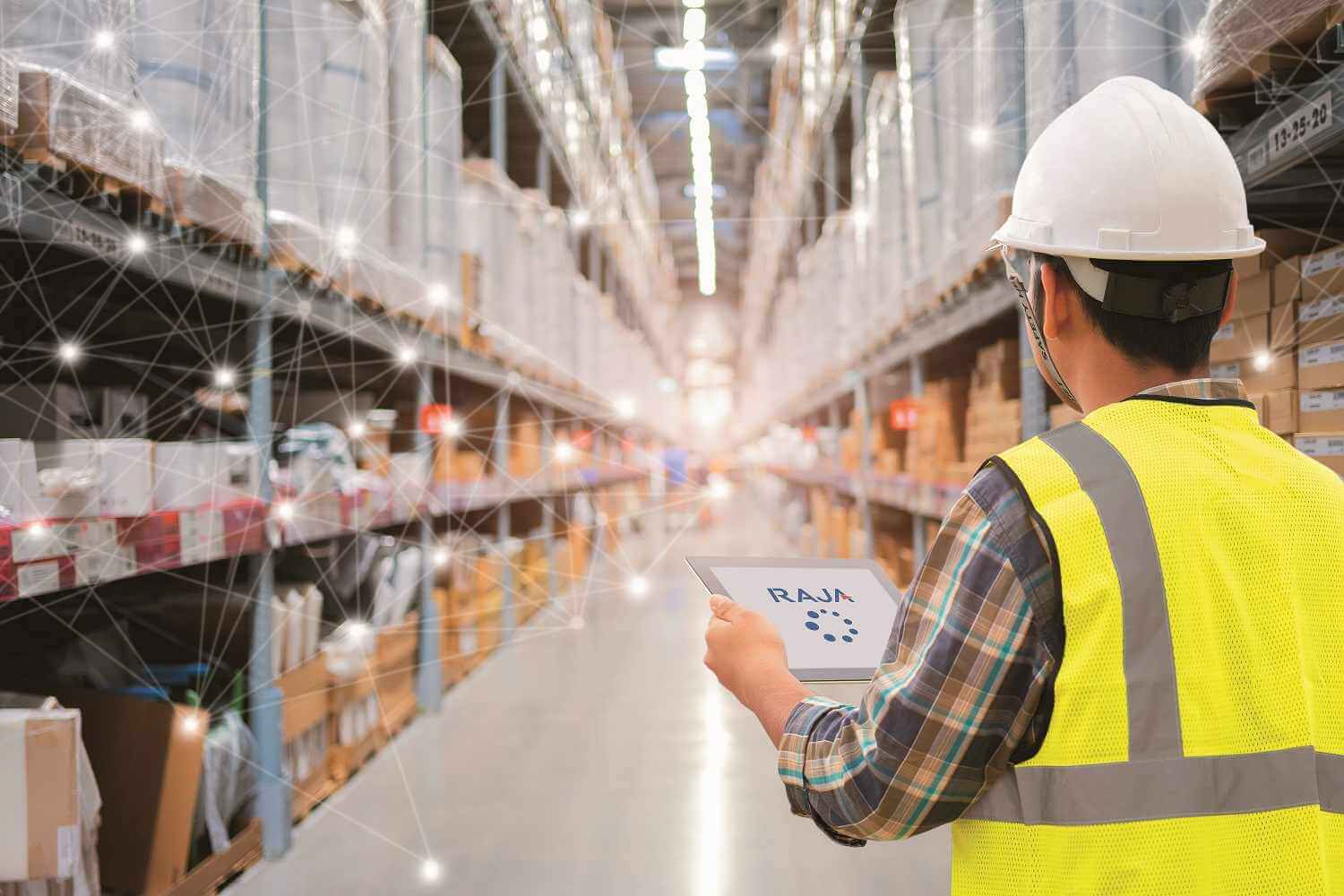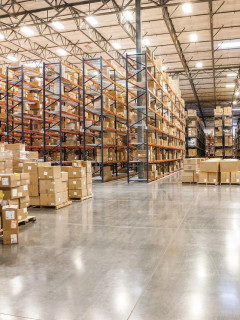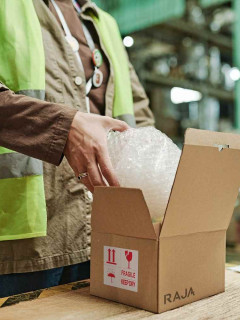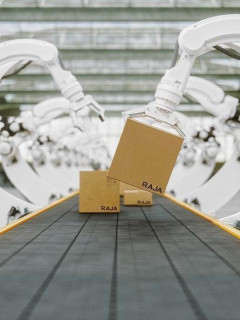It’s a fact: since the advent of Internet 2.0, logistics requirements have continued to evolve, in line with changes in customer consumption patterns. Today, a new concept is shaking up logistics and supply chain managers: omnichannel logistics.What is it really? And what challenges does this logistics overhaul pose for your logistics department? Here you can take stock of the 5 challenges of omnichannel logistics and discover the solutions for overcoming them withcomplete peace of mind.
What’s the difference between omnichannel and multichannel logistics?
First of all, it’s important to understand what we’re talking about when we discuss omnichannel logistics, and above all, how it is different from multichannel logistics
- On the one hand,multi-channel implies that the different shopping channels for consumers exist side by side, without interacting with each other, and that these channels are not integrated with each other and each follow a different supply chain, whether in terms of goods flow management, procurement, warehousing or transport.
- On theother hand, omnichannel implies that consumers use all available shopping channels to buy, so that all purchase information is available on all channels, in real time, and their transport and logistics work in a coordinated way.

Les enjeux de l’omnicanal sur la logistique et les clés pour les affronter
Le passage d’une vision multicanale à une logique d’omnicanal a des impacts significatifs sur les services logistiques. Quels sont les défis auxquels vous devez faire face ?
Et comment les affronter ? Voici les réponses.
1. Une vision des stocks unifiée et en temps réel
Si vos clients utilisent plusieurs canaux pour acheter vos produits, ce mode de consommation a un impact direct sur votre gestion logistique des stocks.
En effet, pour servir au mieux vos clients et maîtriser votre supply chain de bout en bout, il vous faut bénéficier d’une vision des stocks unifiée à 360° sur l’ensemble des canaux (magasins, click-and-collect, e-commerce). L’idée ? Éviter les silos de stockage, pour répondre à la demande du client, quel que soit le canal qu’il utilise.
Et pour ce faire, avoir une vision des stocks en temps réel devient essentiel. C’est ce qui vouspermet
- Implementan omnichannel warehouse management system (WMS ): the technology allows you to benefit from a unified view of your supply chain and flows, for real-time optimisation of your stocks.
- Keep abreast of developments in Big Data and artificial intelligence, which will eventually enable you to forecast your logistics flows across the various channels, to anticipate stock shortages or periods of high order volumes, for example.
2.
Warehouse reorganisation for omnichannel
When you say omnichannel, you mean reorganisation of logistics operations within your warehouse. It is clear that the transition to omnichannel consumption has increased the complexity of managing your warehouse and all the phases of order preparation. At a time when your customers are increasingly demanding in terms of speed of delivery and the experience they have when making a purchase, the challenge is twofold: on the one hand, you need to make omnichannel order preparation more fluid and, on the other, you need to increase the rate of order preparation.The keys to meeting this challenge
- Unify your BtoB and BtoC warehouses, so that you can keep track of all stocks at all times and manage global logistics in one place.
- Set upmulti-SKU locations, i.e. spaces where several products can be stored according to their turnover rate, to make the storage phase less time-consuming.
- Consider delivery from shops rather than from distribution centres, where possible, as this allows you to offer faster order picking (and therefore delivery) times.
- Use automation or robotisation: for example, to speed up the rate of delivery, don’t hesitate to equip yourself with packaging machines and systems (automatic strapping machines, banding machines, wedging machines, etc.).
3.
An omnichannel delivery process geared towards customer satisfaction
Whether your customers have asked for their goods to be delivered at the point of sale or at home, the principle is the same: they now demand optimal deliveries, which provide them with a positive customer experience
the challenge of omnichannel logistics is to provide an excellent delivery experience for customers who are keen on personalisation. This will involve choosing the right carriers to deliver to different locations.The keys to meeting this challenge
- Offer different delivery methods: in-store, drive-through, click-and-collect, home delivery, automatic deposit, etc. A logistical solution that requires you to adapt your packaging to each of these channels, so that it is as protective as possible and always remains a vector of customer experience, whatever the channel.
- Offer optimal delivery times: fast delivery is now more than ever a guarantee of customer satisfaction.
- More broadly, implement à la carte delivery services, which allow customers to customise their delivery slot and location, and also to have real traceability of their order at all stages.
4.
A consistent customer experience across all channels
Alongside the omnichannel issue, another challenge has been shaking up the logistics function for a few years now: customer experience. Your customers now want to have differentiated experiences with your brand that put them at the centre of attention, so you need to be able to provide them with a consistent customer experience across all channels. Whatever channel they use to buy and be delivered to, your customer needs to receive the same attention from your company. At the same time, this challenge will also require you to work on your brand image across all channels to retain these customers in an era of increasing competition in most industries.Keys to tackling the challenge
- Unify your prices across all channels, with total transparency.
- Implementan optimalcustomer return experience(reverse logistics), regardless of the channel used by the customer. If you need advice on this subject, consult our complete guide to successful customer returns.
- Work on the packaging as a vector of customer experience. To do this, make sure you work on the unboxing phase of your products: this is where the first impression your customer will have of your brand, especially in e-commerce, is played out. And to go even further, why not create personalised packaging, where you highlight your brand?
- Implementan Order Management System (OMS) and a Transport Management System (TMS), which allow you to track the order through all channels and throughout the order cycle.
5.
Unified logistics cost tracking
Last but not least, keeping track of your logistics costs in an era where your operations have become omnichannel. This is a big challenge, as the key metrics that the logistics manager needs to track are now spread across different channels. Your goal? To have unified KPIs to track logistics costs in omnichannel, in order to keep your logistics and transport budget under control. Only this unification will then allow you to analyse these metrics for insights, which will help you drive logistics optimisation, aiming for an ever-improving customer experience.Keys to tackling this challenge
- Use the same technology tools across your supply chain to provide unified data, including unifying the technology solutions you use with your logistics providers (if outsourced) to track all your physical flows from end to end.
- Communicate with other departments (marketing, communication, product, etc.) to bring up customer data that will enable you to optimise your omnichannel logistics.
from sourcing to transporting goods to packaging methods, omnichannel logistics is bringing major changes to your organisation. Are you ready to face these challenges?















